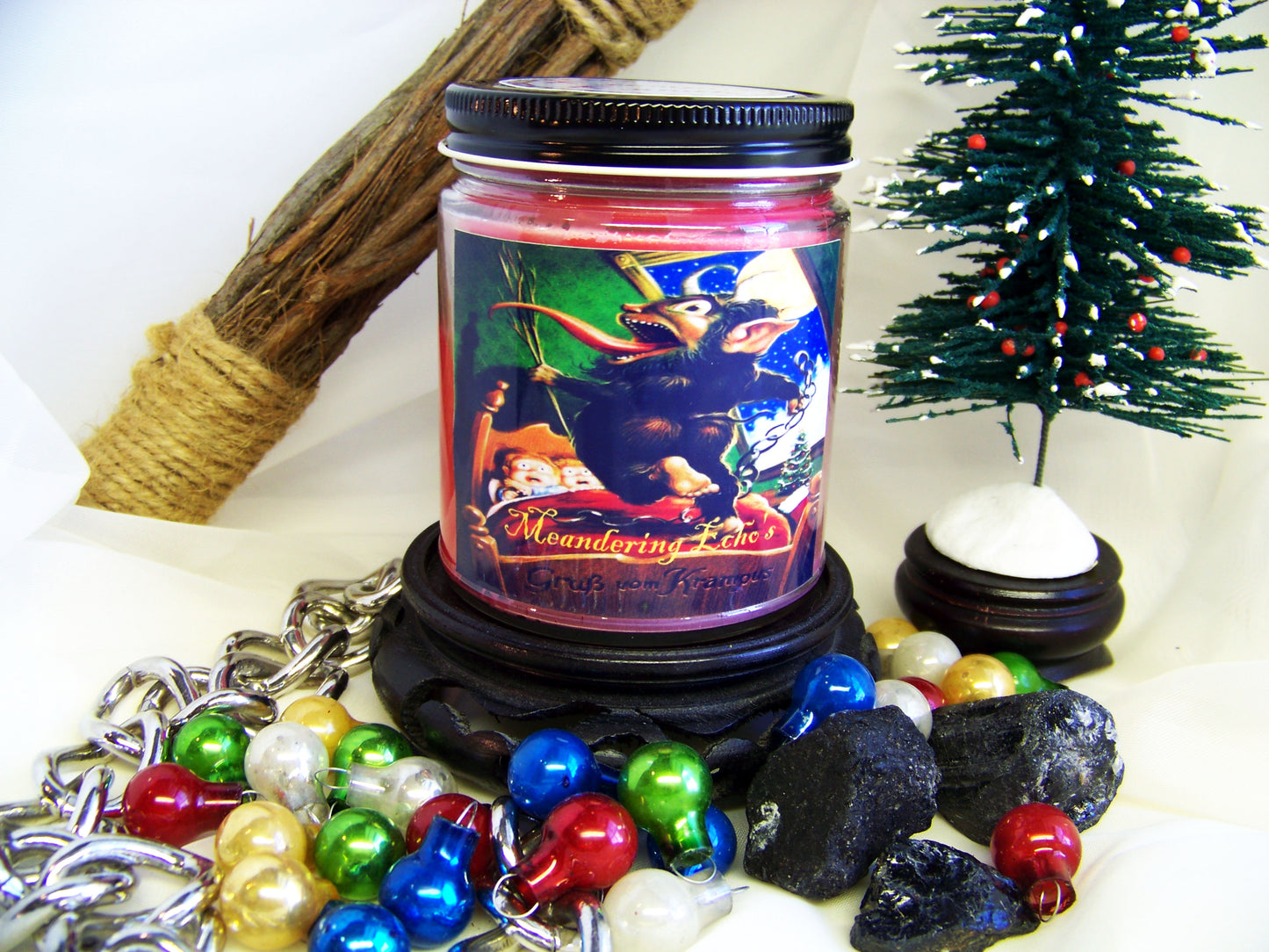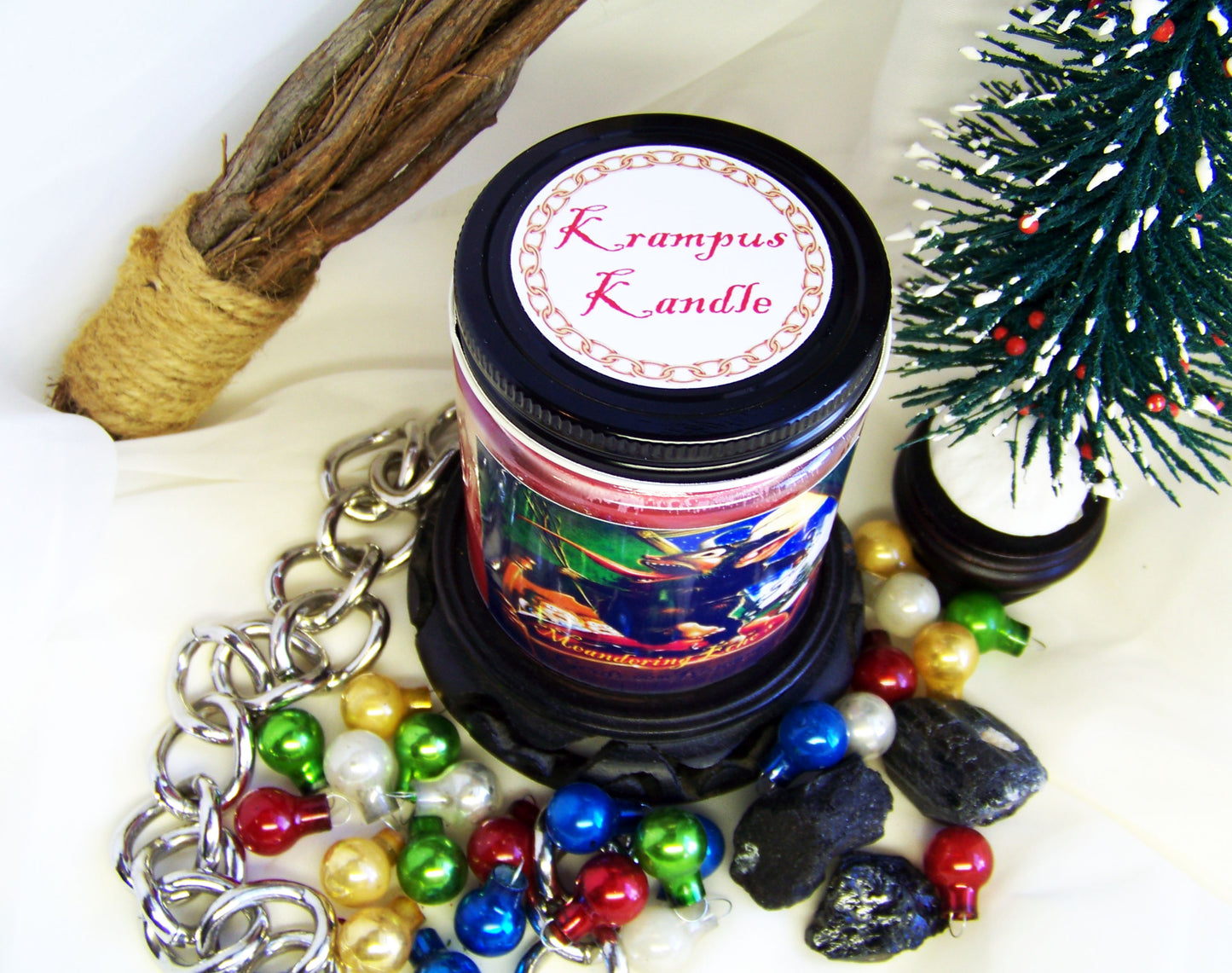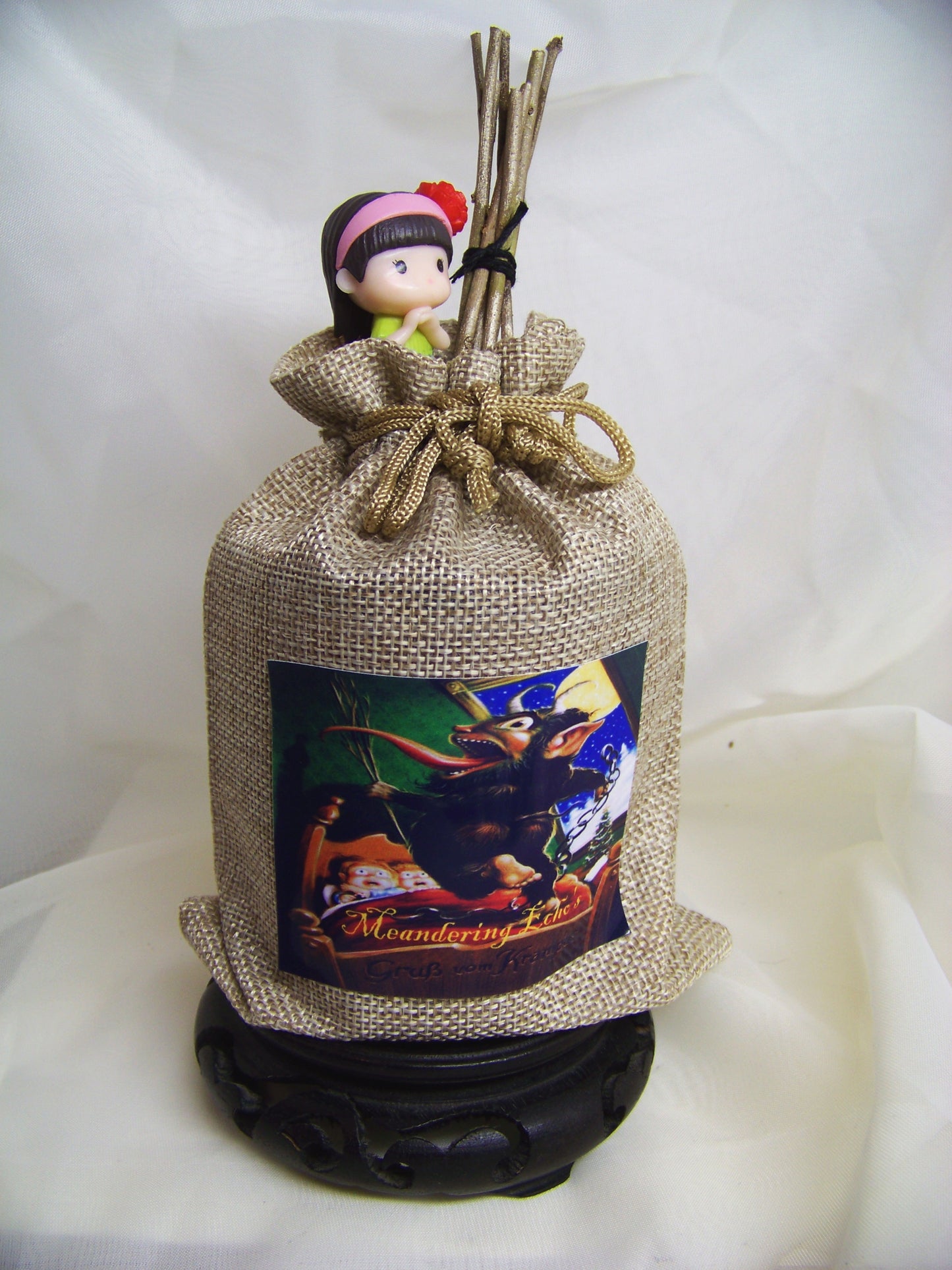Meandering Echo's Metaphysical Emporium
Krampus Candle
Krampus Candle
Couldn't load pickup availability
My whimsical take on the Christmas Season, Krampus has existed in lore for centuries. My candle represents part of the whimsy of the lore! I have included a short history of Krampus after the candle description below.
(Melts are available in the “Wax Melt” section of my store!)
KRAMPUS CANDLE
Scent: Grey Dawn
Soy/Beeswax blend
8 ounce
Red
Black pepper, supple leather, chicory wood, sweet hay, saffron, shaved cypress, patchouli, amber, musk and bergamot.
Packaged in a burlap sack with a doll (representing a kidnapped child) and a bundle of ruten bundle Krampus used to punish naughty children. In Styria the ruten bundle is displayed in the house all year as a reminder to any child that has forgotten Krampus!
KRAMPUS
Krampus, in central European popular legend, a half-goat, half-demon monster that punishes misbehaving children at Christmas time. He is the devilish companion of Saint Nicolas. Krampus is believed to have originated in Germany, and his name derives from the German word Krampen, which means “claw.”
Krampus was thought to have been part of pagan rituals for the winter solstice. According to legend, he is the son of Hel, the Norse god of the underworld.
With the spread of Christianity, Krampus became associated with Christmas—despite efforts by the Catholic Church to ban him. The creature and St. Nicholas are said to arrive on the evening of December 5 (Krampusnacht; “Krampus Night”). While St. Nicholas rewards nice children by leaving presents, Krampus beats those who are naughty with branches and sticks. In some cases, he is said to eat them or take them to hell. On December 6, Saint Nicolas Day, children awaken to find their gifts or nurse their injuries.
Festivities involving Krampus include the Krampuslauf (“Krampus run”). In this activity, which often involves alcohol, people dressed as the creature parade through streets, scaring spectators and sometimes chasing them. Beginning in the late 20th century, amid efforts to preserve cultural heritage, Krampus runs became increasingly popular in Austria and Germany. During this time Krampus began to be celebrated internationally, and the monster’s growing appeal was evidenced by numerous horror films. Some claimed that the expanding popularity of Krampus was a reaction to the commercialization of Christmas.





